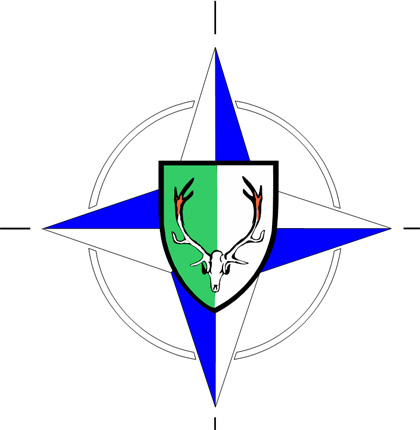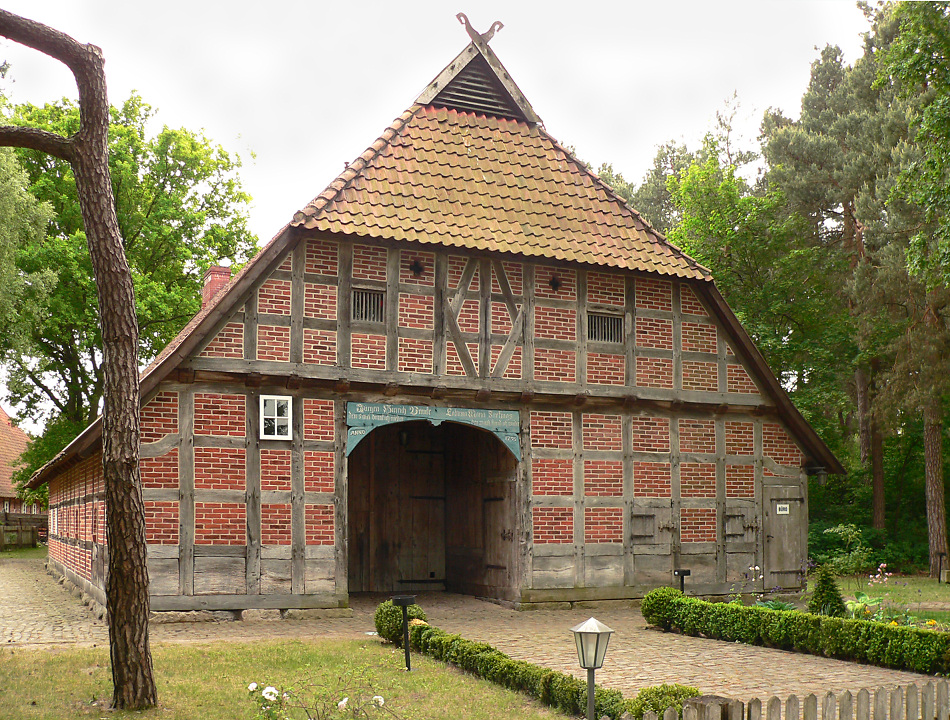|
Belsen (Bergen)
Belsen is a village within the German borough of Bergen in the northern part of Celle district on the Lüneburg Heath in Lower Saxony. The village, whose original site lies about southwest of Bergen, has 331 inhabitants (as at: 31 December 2000). The Belsen concentration camp was named after it. Today Belsen is dominated by the former British Army camp of Hohne (German: ''Lager Hohne'') on the edge of the NATO firing ranges. History Belsen was first mentioned in the records in 1235 under the name ''Bellenhusen''. Formerly an independent municipality, it is part of the town Bergen since 1971. Bergen-Belsen concentration camp The Bergen-Belsen concentration camp was near Belsen. The site of the former concentration camp and the present-day Bergen-Belsen Memorial Centre are mainly within the municipality of Winsen (Aller) and its parish of Walle (Winsen). Between Bergen and Belsen, there were railway ramps onto which prisoners from the incoming goods wagons alighted and from ... [...More Info...] [...Related Items...] OR: [Wikipedia] [Google] [Baidu] |
Bergen, Lower Saxony
Bergen ( Eastphalian: ''Bargen'') is a town in the north of Celle district on the Lüneburg Heath, in Lower Saxony, Germany. Administratively it acts as a municipal borough divided into 12 subordinate parishes based on the town and its surrounding villages: Becklingen, Belsen, Bergen, Bleckmar, Diesten, Dohnsen, Eversen, Hagen, Hassel, Offen, Sülze and Wardböhmen. Bergen-Belsen concentration camp was located in the area of Belsen. The town had 13,099 inhabitants according to the census conducted in December 2008. Members of the British military and their families, who were not included in the census, brought the actual population to about 17,000. These soldiers occupied a NATO base and exercise on the Bergen-Hohne Training Area just outside the town, but the base closed in summer 2015 as part of the British Army's withdrawal from Germany. The ''Sieben Steinhäuser'', a cluster of dolmens dating from the Stone Age, are located within the training area. Geography Bergen is loca ... [...More Info...] [...Related Items...] OR: [Wikipedia] [Google] [Baidu] |
Walle (Winsen)
Walle is a village and ''Ortschaft'' (municipal division) of the municipality of Winsen (Aller) in Celle district, Lower Saxony, on the Lüneburg Heath in Germany. December 2020. Geography Walle lies on a country road between Winsen (Aller) and on the southern perimeter of the in . A for ...[...More Info...] [...Related Items...] OR: [Wikipedia] [Google] [Baidu] |
Villages In Lower Saxony
A village is a clustered human settlement or community, larger than a hamlet but smaller than a town (although the word is often used to describe both hamlets and smaller towns), with a population typically ranging from a few hundred to a few thousand. Though villages are often located in rural areas, the term urban village is also applied to certain urban neighborhoods. Villages are normally permanent, with fixed dwellings; however, transient villages can occur. Further, the dwellings of a village are fairly close to one another, not scattered broadly over the landscape, as a dispersed settlement. In the past, villages were a usual form of community for societies that practice subsistence agriculture, and also for some non-agricultural societies. In Great Britain, a hamlet earned the right to be called a village when it built a church. [...More Info...] [...Related Items...] OR: [Wikipedia] [Google] [Baidu] |
Sven Marquardt
Sven (in Danish and Norwegian, also Svend and also in Norwegian most commonly Svein) is a Scandinavian first name which is also used in the Low Countries and German-speaking countries. The name itself is Old Norse for "young man" or "young warrior". The original spelling in Old Norse was ''sveinn''. Over the centuries, many northern European rulers have carried the name including Sweyn I of Denmark (Sven Gabelbart). An old legend relates the pagan king Blot-Sven ordered the execution of the Anglo-Saxon monk Saint Eskil. In medieval Swedish, "sven" (or "sven av vapen" (sven of arms)) is a term for squire. The female equivalent, Svenja, though seemingly Dutch and Scandinavian, is not common anywhere outside of German-speaking countries. Sven can also be spelled with W, Swen, but is pronounced as Sven. The Icelandic version of Sven/Svend is Sveinn (); the Faroese version is Sveinur (). Entertainment and music * Sven Einar Englund, Finnish composer * Sven Epiney, Swiss televisi ... [...More Info...] [...Related Items...] OR: [Wikipedia] [Google] [Baidu] |
Displaced Persons Camp
A refugee camp is a temporary Human settlement, settlement built to receive refugees and people in refugee-like situations. Refugee camps usually accommodate displaced people who have fled their home country, but camps are also made for internally displaced people. Usually, refugees seek Right of asylum, asylum after they have escaped war in their home countries, but some camps also house environmental migrant, environmental and economic migrants. Camps with over a hundred thousand people are common, but as of 2012, the average-sized camp housed around 11,400. They are usually built and run by a government, the United Nations, international organizations (such as the International Committee of the Red Cross), or non-governmental organization. Unofficial refugee camps, such as Idomeni in Greece or the Calais jungle in France, are where refugees are largely left without support of governments or international organizations. Refugee camps generally develop in an impromptu fashion w ... [...More Info...] [...Related Items...] OR: [Wikipedia] [Google] [Baidu] |
Bergen-Hohne
Bergen-Hohne Training Area (German: ''NATO-Truppenübungsplatz Bergen'' or ''Schießplatz Bergen-Hohne'') is a NATO military training area in the southern part of the Lüneburg Heath, in the state of Lower Saxony in northern Germany. It covers an area of , which makes it the largest military training area in Germany. It was established by the German armed forces, the ''Wehrmacht'', in 1935. At the end of the Second World War it was taken over by British occupying forces and some of its facilities used as a liberation camp for survivors of the Bergen-Belsen concentration camp, which was located on the edge of the training area near the town of Bergen. Under British control, the training area was steadily expanded and, since the 1960s, has also been used by the German Armed Forces (''Bundeswehr'') and other NATO troops. Geography Location Bergen-Hohne Training Area is situated on both sides of the boundary between the districts of Heidekreis (formerly ''Soltau-Fallingbostel'' ... [...More Info...] [...Related Items...] OR: [Wikipedia] [Google] [Baidu] |
NATO
The North Atlantic Treaty Organization (NATO, ; french: Organisation du traité de l'Atlantique nord, ), also called the North Atlantic Alliance, is an intergovernmental military alliance between 30 member states – 28 European and two North American. Established in the aftermath of World War II, the organization implemented the North Atlantic Treaty, signed in Washington, D.C., on 4 April 1949. NATO is a collective security system: its independent member states agree to defend each other against attacks by third parties. During the Cold War, NATO operated as a check on the perceived threat posed by the Soviet Union. The alliance remained in place after the dissolution of the Soviet Union and has been involved in military operations in the Balkans, the Middle East, South Asia, and Africa. The organization's motto is ''animus in consulendo liber'' (Latin for "a mind unfettered in deliberation"). NATO's main headquarters are located in Brussels, Belgium, while NATO ... [...More Info...] [...Related Items...] OR: [Wikipedia] [Google] [Baidu] |
Winsen (Aller)
Winsen an der Aller () or Winsen (Aller) is a town in the district of Celle in the German state of Lower Saxony. Geography Winsen has around 12,900 inhabitants and lies on the southern perimeter of the Lüneburg Heath, on the banks of the Aller, somewhat to the west of its tributary, the Örtze and about 15 km northwest of Celle. As well as the town itself, the borough of Winsen also includes the villages of Bannetze, Meißendorf, Stedden, Südwinsen, Thören, Walle and Wolthausen. History The name of the town is derived from ''Wynhausen'' (''Wyn'' = ''Weideland'' or meadow). Winsen's church is dedicated to John the Baptist. Because all villages with churches named after this patron saint appeared around 800 it is suspected that this was also when Winsen was founded. Today Winsen is a favourite local recreation and holiday area and, since 1975, has been recognised officially as a climatic health resort (''Luftkurort''). Politics Coat of Arms The coat of arms of the town ... [...More Info...] [...Related Items...] OR: [Wikipedia] [Google] [Baidu] |
Bergen (Landkreis Celle)
Bergen (), historically Bjørgvin, is a city and municipality in Vestland county on the west coast of Norway. , its population is roughly 285,900. Bergen is the second-largest city in Norway. The municipality covers and is on the peninsula of Bergenshalvøyen. The city centre and northern neighbourhoods are on Byfjorden, 'the city fjord', and the city is surrounded by mountains; Bergen is known as the "city of seven mountains". Many of the extra-municipal suburbs are on islands. Bergen is the administrative centre of Vestland county. The city consists of eight boroughs: Arna, Bergenhus, Fana, Fyllingsdalen, Laksevåg, Ytrebygda, Årstad, and Åsane. Trading in Bergen may have started as early as the 1020s. According to tradition, the city was founded in 1070 by King Olav Kyrre and was named Bjørgvin, 'the green meadow among the mountains'. It served as Norway's capital in the 13th century, and from the end of the 13th century became a bureau city of the Hanseatic Leagu ... [...More Info...] [...Related Items...] OR: [Wikipedia] [Google] [Baidu] |
Bergen-Belsen Concentration Camp
Bergen-Belsen , or Belsen, was a Nazi concentration camp in what is today Lower Saxony in northern Germany, southwest of the town of Bergen near Celle. Originally established as a prisoner of war camp, in 1943, parts of it became a concentration camp. Initially this was an "exchange camp", where Jewish hostages were held with the intention of exchanging them for German prisoners of war held overseas. The camp was later expanded to accommodate Jews from other concentration camps. After 1945, the name was applied to the displaced persons camp established nearby, but it is most commonly associated with the concentration camp. From 1941 to 1945, almost 20,000 Soviet prisoners of war and a further 50,000 inmates died there. Overcrowding, lack of food and poor sanitary conditions caused outbreaks of typhus, tuberculosis, typhoid fever and dysentery, leading to the deaths of more than 35,000 people in the first few months of 1945, shortly before and after the liberation. The cam ... [...More Info...] [...Related Items...] OR: [Wikipedia] [Google] [Baidu] |
Bergen-Hohne Training Area
Bergen-Hohne Training Area (German: ''NATO-Truppenübungsplatz Bergen'' or ''Schießplatz Bergen-Hohne'') is a NATO military training area in the southern part of the Lüneburg Heath, in the state of Lower Saxony in northern Germany. It covers an area of , which makes it the largest military training area in Germany. It was established by the German armed forces, the ''Wehrmacht'', in 1935. At the end of the Second World War it was taken over by British occupying forces and some of its facilities used as a liberation camp for survivors of the Bergen-Belsen concentration camp, which was located on the edge of the training area near the town of Bergen. Under British control, the training area was steadily expanded and, since the 1960s, has also been used by the German Armed Forces (''Bundeswehr'') and other NATO troops. Geography Location Bergen-Hohne Training Area is situated on both sides of the boundary between the districts of Heidekreis (formerly ''Soltau-Fallingbostel' ... [...More Info...] [...Related Items...] OR: [Wikipedia] [Google] [Baidu] |






.jpg)